2018 Trek Stache 5
(discontinued)
| Where To Buy | |||
|---|---|---|---|
Free standard shipping on all bikes (continental U.S. only).
Flat rate shipping to Hawaii and Alaska. |
Free standard shipping on all bikes (continental U.S. only).
Flat rate shipping to Hawaii and Alaska. $15.99
|
||
Stache C Frameset
$1,999.99
|
|||
Stache AL Frameset
$1,199.99
|
|||
Free shipping on orders over $50 (continental U.S. only).
International shipping available. Some exclusions apply. |
|||
Free shipping on orders over $50 (continental U.S. only).
International shipping available. Some exclusions apply. |
|||
1 member reviews
[Note: I am placing this review under 2018 Trek Stache 5, though mine is a 2016 Stache 5 (no changes have been made to the frame other than color). Mods, please feel free to move this review to another thread if appropriate.]
The Trek Stache is a mold cracking, paradigm shifting, maverick of a bike design all packed into a very innocent-seeming hardtail who's silly big wheels are but the tip of the iceberg of its true magic. This is a bike that will completely redefine how you ride!
A bold claim? Yes. But let me draw it out for you...
First of all, set aside any biases you may have regarding 29+ wheels. What I observed after nearly 12 months on the Stache is that 29+ wheels roll almost as fast as standard 29ers (2.25-2.5) but provide almost as much climbing traction as a fat bike. The term I use to describe this is the 95/95 rule, 95% the speed of a regular 29er, 95% the traction of a full on fat bike.
Now, I realize that the phrase "fat bike" is like a four letter word in the MTB community so rest assured, I'm not saying the Stache is in any way shape or form a fat bike. However, if you've ever ridden a fat bike, you can't deny they have copious amounts of traction. And the Stache feels almost as velcro'd to the dirt as a fat bike, which is loads more than a regular skinny 29er.
Having said that, the Stache does not ride like any other hardtail I have ever thrown a leg over. With 3-inch rubber running on 50mm wide rims and a good suspension fork, the tire volume coupled with front travel provides enough cush to allow flat out hooliganism on the descents -- comparable to a full suspension trail bike.
"But wait! That's heresy!" Nothing descends like a proper full suspension bike, right? Well, that really depends on where you ride it. I don't deny that on very techy, long descents laden with big rocks, drops and other such fun, nothing beats out a solid full suspension rig. But the reality is that for the overwhelming majority of east coast trail riding, the terrain simply doesn't match our appetite for suspension.
Prior to the Stache, my go-to trail bike was my Ibis Mojo HD3, with 160/150mm f/r travel and 27.5" wheels. Now here I am extolling the virtues of a hardtail with these ridiculous big wheels. Night and day difference. So what gives?
The answer is three-fold. First, the Stache climbs better than my full-suspension bike, that should come as no surprise. Second, the Stache has not slowed me down on the descents, thank you Strava for providing incontrovertible proof. Third, and this is the biggie, the Stache is so efficient that I now often pedal, rather than drive, 10-20 miles to the trail head without batting an eyelash. I would never have considered doing that on my 150mm full suspension rig because its simply not efficient enough -- and this has fundamentally changed my riding style from park and play 10 - 20 mile trail loops to routinely riding 40-milers that include tarmac, gravel, and technical single-track, all in one ride. The Stache handles it all like a boss.
The Stache has some tricks up its sleeves to enable it to be such a versatile beast. A slack by-hardtail-standards 68 degree head tube (when running a Fox Factory 34 fork at 140mm travel) strikes just the right balance for ripping flowy terrain. Trek's clever asymmetrical chainstay routing and Stranglehold dropout system creates a super-short chainstay which provides whip-like handling. The distinctly modern long-ish reach, short stem and wide bars work in concert to keep the front end planted and precise. All-in-all, geometry that results in freakishly zippy handling with almost no compromise in climbing efficiency.
To get the most performance out of the Stache I did upgrade almost every component starting with a Reverb dropper post and XT brakes, never leave home without 'em. Second, the OEM wheel set which (on my 2016 Stache) is comprised of Sun Ringle Mulefut rims laced to Trek's "mystery" hubs, doesn't get the job done. The Mulefut rims do not like to go tubeless without all sorts of weight increasing shenanigans and the no-name hubs have the worst engagement of anything I've ever ridden. An upgrade to some carbon hoops laced to proper British hubs dropped a little more than a pound of rotating weight and made the bike accelerate faster and handle better, go figure.
Since my Stache 5 is the 2016 model, it came with Trek's rigid carbon fork. Although it's an excellent NoShox set-up, I felt that it held the bike back from blooming into the trail slayer that its meant to be. To remedy the situation I mounted up a Fox Factory 34 140mm 27.5+ Boost fork which provides 8mm of clearance for the 29+ wheels and tires. On my first few rides, I felt as though the front suspension was writing some checks that the rigid rear end might not be able to cash on chunky terrain but I quickly learned to just trust it. That's when things really opened up for me -- and I haven't ridden my full suspension bike since.
There really aren't many tire options in the 29+ world but the Bontrager Chupacabra 29x3" that comes spec'd on every version of the Stache is integral to what makes this a great bike. At 850 grams, Its by far the lightest 29+ tire on the market, about the weight of most solid 29x2.3-2.5" tires. The Chupacabra doesn't offer the sort of squarish cornering knobs that I would prefer and its somewhat susceptible to sidewall punctures. Nevertheless, its got excellent straight-line traction and wears well. Its these factors that allow a 29+ wheeled bike to handle as well as the Stache. I wouldn't be opposed to trying out some different tire options in the future but the reason I am on my second set of Chupas is that keeping the rotating mass low is so key to what makes this bike as playful and as fun as it is. And despite the roundish tire profile, the sheer size of the contact patch allows the bike to corner better than you might imagine.
Some noteworthy fun facts about the Stache: it can easily be converted into a single speed using the Stranglehold dropout to provide precise chain tension. And, if you're really into the single speed experimentation, because the chain runs below, not through, the chainstay, the Stache can be set-up with a belt drive.
I don't have an exact weight on my Stache but it feels comfortably light with the alloy frame and carbon wheels. Boost spacing aids in firm pedal feel and frame vibration is barely an issue when riding on 3-inch rubber. Nonetheless, if the carbon frame offers comparable rigidity at a lower weight, I wouldn't object to an upgrade if the cost difference was within reason.
My only real niggle with Trek's design here is the press fit bottom bracket, or the creak-o-matic as I like to call it. In all other regards Trek nailed the details.
So make sure NOT to try out the Stache... because its addicting. Several of my riding buddies tried mine and quickly put the "for sale" signs on their full squish bikes. Now we're like a Stache fanboy club coming down the trail. Imitation is the greatest form of flattery, right?
I give this bike 5 out of 5 stars because not since I purchased my first proper mountain bike back in 1993 has any bike so redefined the way that I ride.
[Some additional details: I'm 5'10" with a 29" pant leg and I ride the size 18.5 frame which is the middle of the five sizes on offer, its a perfect fit. As for build kit, I upgraded to XT brakes, derailleur and shifter. I run a 32 tooth chain ring to a 10-speed 11-42 wide range cassette. Custom wheel build is Hope Pro 4 hubs laced to Light Bicycle 50mm carbon rims. As mentioned above, I'm running a 140mm Fox 34 27.5+ Boost fork which has just enough clearance for the 29+ wheels, but without much room to spare.]
Cheers, and happy riding.
Specifications
Rear: Bontrager sealed bearing, alloy axle, 148x12mm Boost
Internal derailleur and dropper post routing
Stranglehold horizontal sliding dropouts
| Where To Buy | |||
|---|---|---|---|
Free standard shipping on all bikes (continental U.S. only).
Flat rate shipping to Hawaii and Alaska. |
Free standard shipping on all bikes (continental U.S. only).
Flat rate shipping to Hawaii and Alaska. $15.99
|
||
Stache C Frameset
$1,999.99
|
|||
Stache AL Frameset
$1,199.99
|
|||
Free shipping on orders over $50 (continental U.S. only).
International shipping available. Some exclusions apply. |
|||
Free shipping on orders over $50 (continental U.S. only).
International shipping available. Some exclusions apply. |
|||
















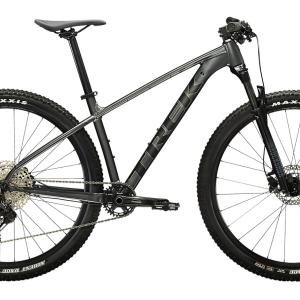
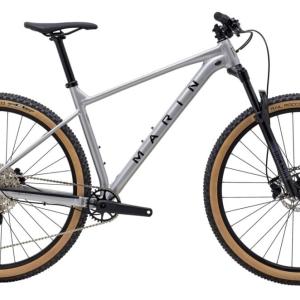


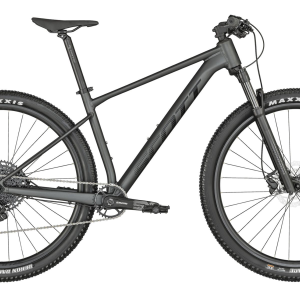


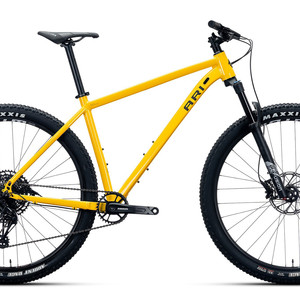



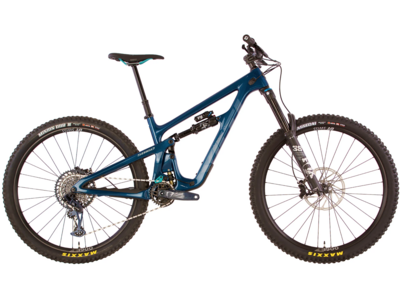


1 comments
Post a reply to: Redefine the Way You Ride!